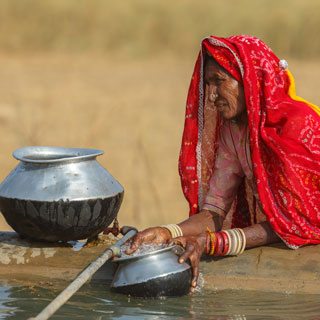Common But Differentiated Responsibilities (CBDR) versus Common But Differentiated Risks (CBDR)

The solidness and sweep of the physical science basis of climate change presented in the 6th Assessment Report of the IPCC published on 9 August 2021 is humbling. I think many years later, whatever the state of the climate, such and similar milestone publications will be remembered as scientific scriptures replete with solemn guidance on how to direct the future of human development – unless, of course, it is disproved by equally credible counter-evidence. Since I have no expertise in atmospheric chemistry or in earth sciences, I will refrain from commenting on the findings presented by the IPCC and accept them to be the scientific truth. I think this is a safe position to take. But if we descend from such rarefied heights to the baser practicalities of how we will/should go about climate change/action, I wish to say a few things.
My thoughts were triggered by India, as in the Ministry of Environment, Forest and Climate Change’s official statement on the IPCC’s report. The official statement has interpreted the IPCC’s findings as “a clarion call for the developed countries to undertake immediate, deep emission cuts and decarbonisation of their economies”, with which I agree. I think India is well within its right, granted by the principle of Common But Differentiated Responsibilities (CBDR), to demand less wishy-washy climate action commitments from developed countries that have “usurped far more than their fair share of the global carbon budget”. Yes, net-zero commitments have been made the world over, but they are hardly the policy panacea we are looking for. Without interim targets, clarity on international offsets, and actionable plans, net-zero is meaningless. This is where my agreement with MoEF&CC’s response ends.
The official statement reads, “It [i.e. the IPCC’s report] vindicates India’s position that historical cumulative emissions are the source of the climate crisis that the World faces today.” Whilst that is true to a large extent, the climate crisis is not limited to a sliver of time – it is, in fact, a continuum of events, which began around the 1850s and which will stretch until such time deep reductions in carbon dioxide and other greenhouse gas emissions are made globally. India is currently one of the top ten emitters of carbon dioxide in the world, and even if it is not responsible for “the climate crisis that the World faces today”, it will definitely be responsible for the future climate crisis. I fully understand that now is India’s time to develop, as it should, and that historically (and even currently) ‘development’ has been so deeply entwined with the use of fossil fuels that it may not be easy to think of a development future without it. I have detailed my thoughts here. Plus, there may be other geopolitical nuances that I don’t fully understand.
But I want to present a new way of looking at things. It is not radically new – just sometimes forgotten whilst allocating responsibility for climate change. Indeed, there is another CBDR, i.e. Common But Differentiated Risks. Climate change is already affecting and will continue to affect every inhabited region across the globe differently. The IPCC’s report captures differences in observed changes in weather and climate extremes such as heatwaves, heavy precipitation, and agricultural and ecological drought for different geographical regions of the world. Per the Global Climate Risk Index 2020 published by Germanwatch, India is among the top 10 countries most affected by extreme weather events in 2018 (Climate Risk Index: Rank 5; Fatalities: Rank 1; Losses in million US$ (PPP): Rank 2) and in the top 11-20 countries most affected by extreme weather events in 1999-2018. Of course, even within India, some will be more vulnerable than the others, divided along the lines of where they live, how much they earn, and what work they do, among others. I think the principle of Common But Differentiated Risks warrants a more ambitious target-setting by India, for its own sake.
The hard fact is that different communities and different countries are unequally responsible for climate change and are asymmetrically at risk by it. But will these two CBDRs play out equally at COP26?
This blog is written by Akash Goenka




